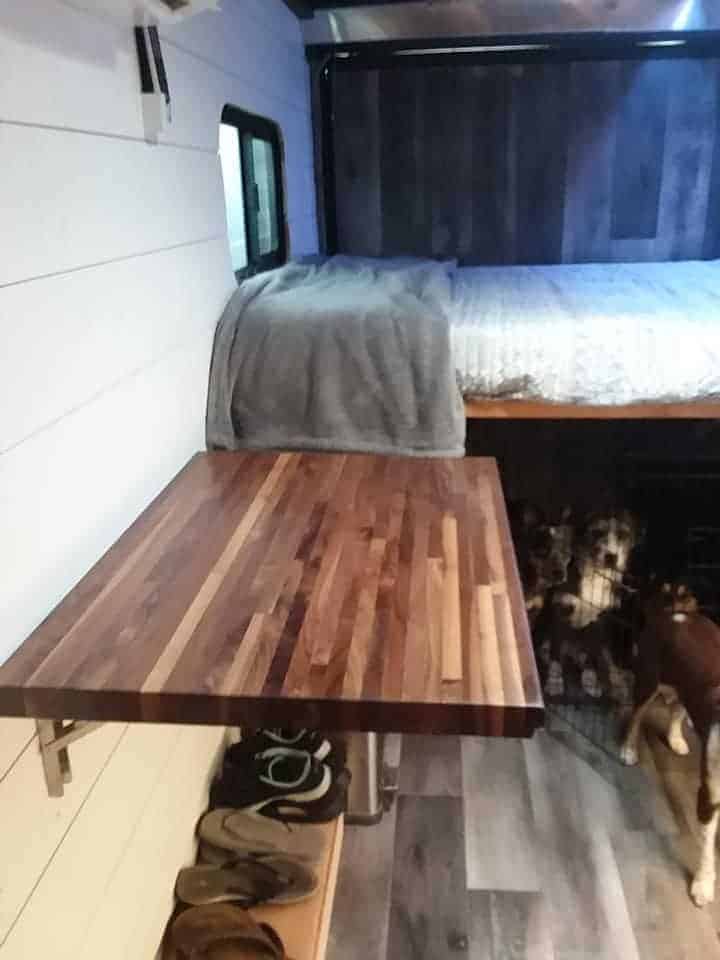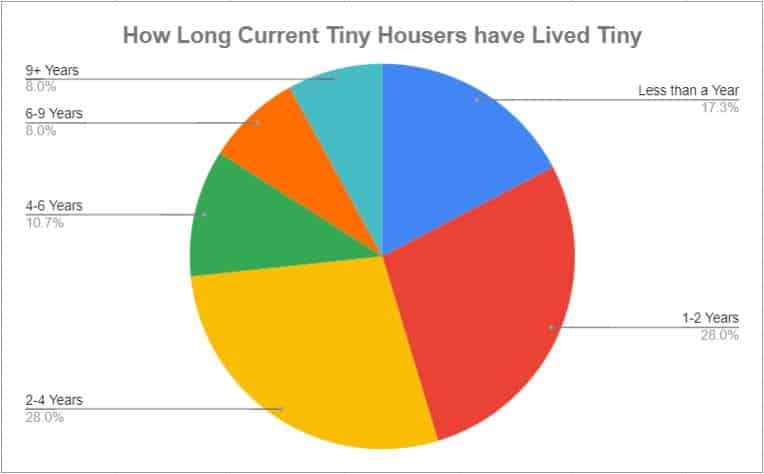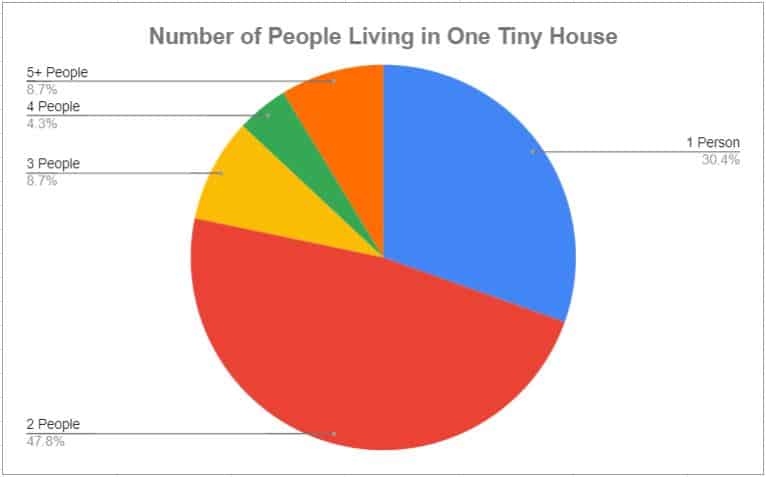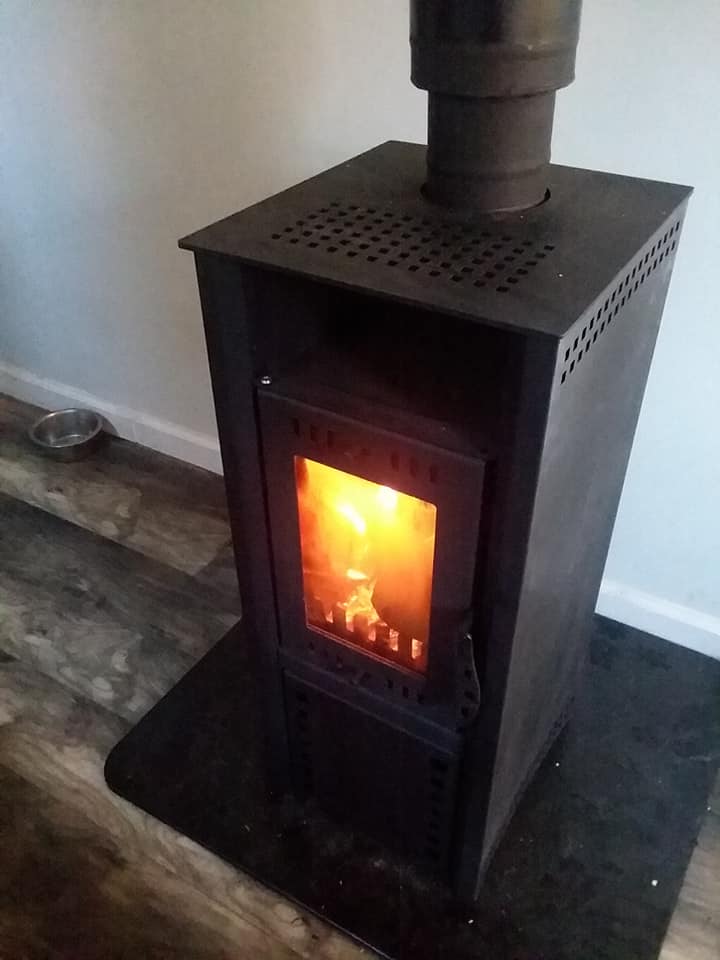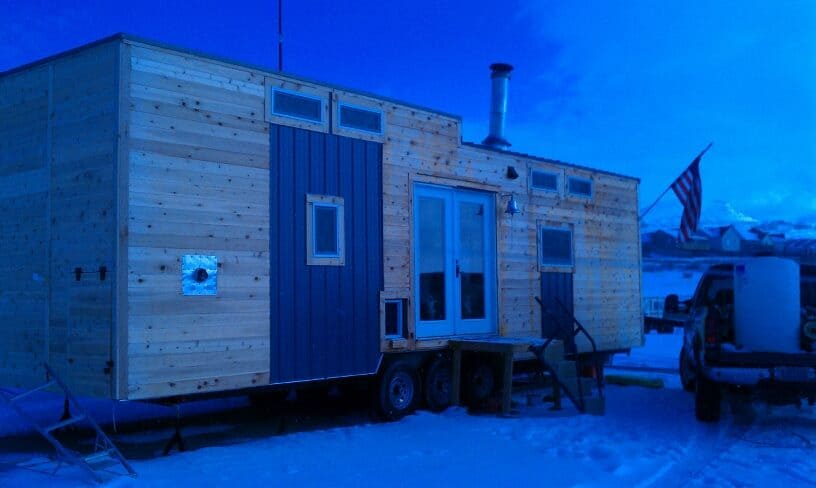
This article has been reviewed in accordance with our editorial policy.
My husband and I have been living tiny for almost 4 years now. We have had a lot of people ask us for tips and how they can go tiny as well. So I wanted to take the time to give everyone some tricks and advise for going tiny.
15 Tips for Tiny House Living
- Downsize with These Tips
- Have These 4 Storage Areas
- Choose Some Dark Colors
- Have a Coat Closet
- Buy Cheap Floors
- Use a Fold Out Table
- Use Fold Up Chairs
- Make Lists for Shopping
- Organize Your Stuff Monthly
- Declutter Once a Year
- Buy a Lug Nut Covering Wheel Lock
- Use Cleaning Vinegar
- Keep Important Documents Organized
- Keep a Box of Useful Items
- Get Window Shades
1. Downsize with These Tips
Downsizing is always a big concern for people who want to go tiny. The biggest change in living tiny is having less space and thus, less stuff. Here are some tricks you can use to help yourself downsize.
1. Have a Friend Help You
One of the big problems I have found people to have is the inability to know what to downsize. Even if you have four similar items, it can be hard to determine if you really don’t need them.
Having an outsider opinion can help you drastically. Since they do not see what you own every day, they did not buy it, and they do not feel an emotional attachment to it.
Be sure to chose a friend who is either a minimalist or has a similar mindset. They can help you determine what you will actually use and what you will not.
2. Mark Your Items with Tape
This is the best way to actually see what you use frequently. Place a piece of tape on everything you own, it’s best to color code, and then take it off when you use the item.
After just a couple months you will really see a pattern. We tend to use the same items over and over again, even if we have other options. This is an efficient way to visualize what you actually need.
3. Touch Each Item
Another popular way of downsizing is by feeling your items. If you feel happy when you touch it, than keep it. If you don’t feel excited about it, than you probably need to get rid of it.
A huge bonus to living tiny is that, since you don’t own many things, you can own all of your favorite things. When I need something, I buy something I love.
I don’t need things very often, and I keep them until they are broken. But when I do buy something, I get exactly what I want. Every day I wear my favorite clothes, I use my favorite dishes, and sleep with my favorite blanket.
2. Have These 4 Storage Areas
Storage is key to living tiny. You do not need lots of things, but you do need a place to keep the things you have. I have found that there are a few key storage areas you will need.
1. “Rarely Used” Storage–Large
This is where you will keep things you need on occasion or seasonally. Here we keep snow boards, a back up propane heater, Christmas tree, fancy occasion outfits, a suitcase, a dog cone, extra blanket, and some seasonal clothes.
2. Bathroom Storage–Medium to Small
This does not have to be in your bathroom, this is just what I call it, based on the type of things you store. Here we store bathroom supplies, dog stuff, cleaning supplies, gym stuff, laundry stuff, and some extras like bug spray.
3. Clothing Storage–Medium to Small
Obviously, you need a good place to store your clothes. Keep in mind your dirty clothes too, have a hamper in a convenient location. We either have a closet to hang our clothes and a small sock drawer or we have a dresser.
4. Kitchen Storage–Medium
This will be the area you store everything else, including things you use a lot. Of course we store food and cooking supplies in our kitchen but we also store paperwork, pens, books, scissors, keys, bags, remotes, medicine, and so on.
3. Choose Some Dark Colors
People often say having light colors makes the room feel open. That is not the case. Having a dark wall makes it feel as if that is open space. It is a better idea to use some dark colors if you want the space to feel open.
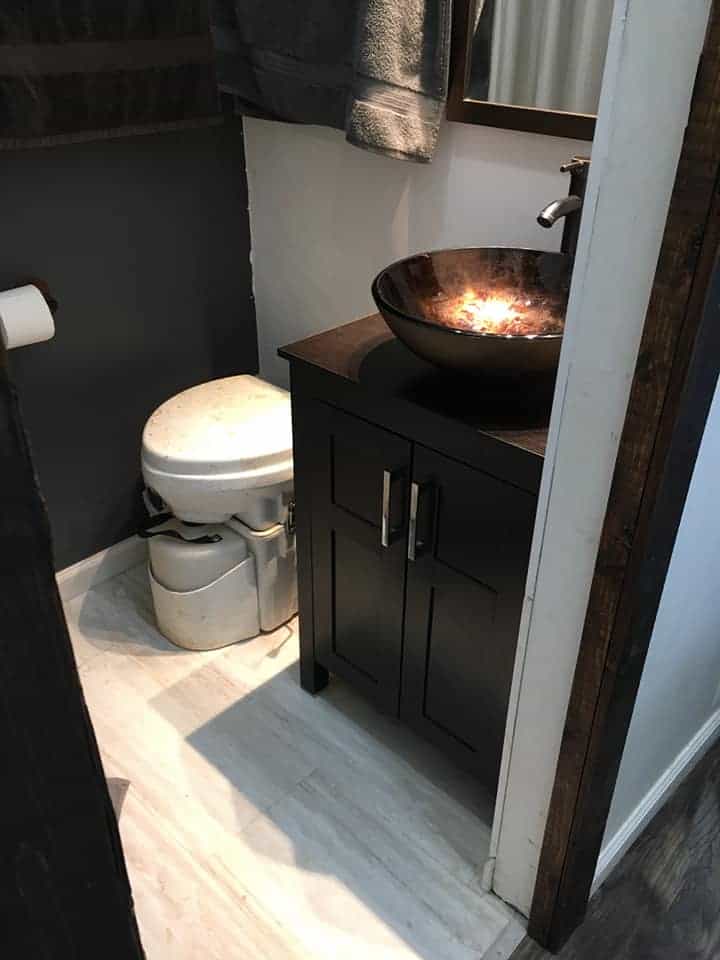
4. Have a Coat Closet
The one thing we always forget about, when designing a home, is where to put our coats. This may seem minor, until you have a pile of bulky coats that you don’t know where to put.
Ideally having a coat closet would be best. However, you can also just use some wall hooks in a well placed area. We have some coat hooks by the door, over our laundry hamper and the wall hooks for our chairs.
5. Buy Cheap Floors
This one depends on your lifestyle. Keep in mind that the floors in a tiny house get much more wear on them than a regular home. This is because you have less floor space to do different things.
We have five dogs in our tiny house and the floors are always the first thing to get ruined. In a tiny house floors are relatively cheap to replace. If you live around a lot of dirt, have pets, or plan on moving around in your tiny house, I would definitely recommend getting cheap floors. Then you will not be so heart broken when they get ruined.
6. Use a Fold Out Table
We have a fold out table that I use all the time for work, school, dinner, or anything else.
7. Use Fold Up Chairs
Such a huge space saver!
8. Make Lists for Shopping
This is key when doing any kind of shopping, whether it’s clothes, food, supplies, or anything else. Make a list of what you need and stick to it, this will help you avoid buying something you already have or something you don’t have room for anyway.
9. Organize Your Stuff Monthly
Ideally you should do this once a week. Things tend toward disorder. I usually organize a drawer or small area once a week. If I am too busy I will take a few hours once a month and organize a larger area.
This is key to maintaining a happy life in a tiny house. It is so easy for things to get out of order and become difficult to live around. It is a lot easier to organize your stuff constantly when you don’t have very much. Keep it that way!
10. Declutter Once a Year
At least once a year, sometimes every six months, my husband and I go through all of our stuff. We sort through and get rid of anything we are no longer using or is too worn out. This is easy to do when you have a tiny house and not a lot of stuff.
You need to stay consistent at this or you will have too many things to fit in a tiny house. Things always seem to accumulate and it is important dispose of or donate things you don’t use.
We have been living tiny for almost four years and we really don’t buy much anymore. However, I am still amazed at the amount of things I find in my tiny house, each year, that I do not use.
I was shocked when we had been living in a 7′ x 14′ for under 6 months and I still found a black trash bag full of things we did not use or that were broken. Even if you do not live in a tiny house, staying on top of this will help you stay way more organized.
11. Buy a Lug Nut Covering Wheel Lock
This is essential if you have a tiny house on wheels (THOW) and still have the wheels on it. I have heard so many horror stories of people driving off with someone’s home.
This is your home and it has all of your pets and belongings in it. Getting a good wheel lock is an additional safety measure. You can also install a GPS in your house, but I would still recommend a wheel lock.
Get a wheel lock that covers the lug nuts too. Most THOWs are on a dual axle trailer. If you just put a simple wheel lock on it, the thief can still take the tire off, pull out the axle, and drive away with the other axle in tact. Also, these wheel locks are usually a little more heavy and harder to cut off.
12. Use Cleaning Vinegar
I recommend using cleaning vinegar or white vinegar to do almost all of your cleaning. Cleaning vinegar is more acidic, but otherwise they work the same way.
You can use this for most types of cleaning and it will save space in your house, by not needing 4 different options. Also, most composting toilets recommend that you use vinegar to clean the toilet, so it is something you may already be buying.
13. Keep Important Documents Organized
There may not be a lot of space in your home and you have to decide where to store things you don’t use often. However, keep you important paperwork somewhere you can always find it.
I cannot remember how many times it was a life saver to know exactly where my documents were, whether we were moving, traveling, or just living daily life.
Knowing exactly where your important paperwork is and having it organized, will not only come in useful, but it will also give you peace of mind.
There are some little things like this that you need to think about when living tiny. You will not likely have a home office or even a cabinet dedicated to paperwork. But it is critical that you keep it safe and organized. Do not let things like this get lost in your extra storage.
14. Keep a Box of Useful Items
This has been a life saver for me many times. Not only is it useful to have this box when you need it, but it also eliminates you having to buy the same thing over and over.
Everyone’s box will be a little different, it will be designed to fit them.
My box has packaging tape (every year I send Christmas presents to my family), a stapler, envelopes, stamps, an eraser, tape, and so on. This is important to keep organized as well.
15. Get Window Shades
This seems so small but makes such a big difference. Living in a tiny house is different than a larger home in that you always feel like you are close to being outside.
This is usually a great thing, I love feeling like I’m on a porch while watching the rain. However, I do not want to feel like my neighbors can always see me. Having curtains up can help give you more privacy.
Specialized Tinys, LLC
That is it for today, but if you felt like this helped you then check out more on our site to see real insider tips and information from someone who actually lives tiny!


